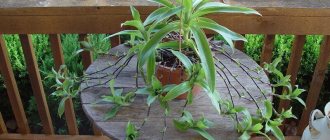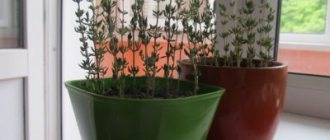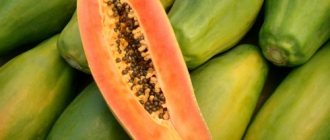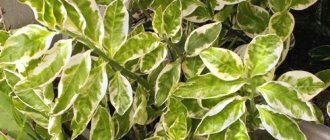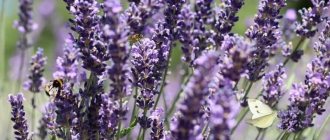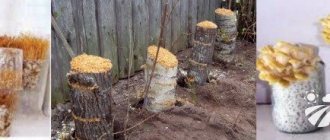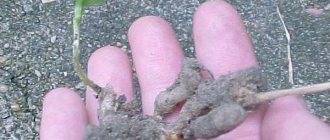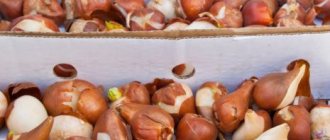The name of the flowers comes from the name of the German botanist Friedrich Friese. With their natural grace, pastel colors and durability, freesias are ideal for decorating rooms. Freesia blooms for quite a long time and looks charming. These extremely delicate flowers are often used to make bouquets, and a freesia wedding bouquet is the dream of many brides.
To grow beautiful flowers, you need to know how to plant freesia correctly, the features of care in open ground, the plant’s requirements for soil and growing conditions. This will be discussed below.
Characteristics of freesia
The homeland of the plant is South Africa. These unusual flowers were discovered at the end of the 18th century in Africa and won the hearts of Europeans.
This is interesting! Due to its proximity to the ocean, South Africa has a unique climate. Even during the dry season, dense fogs form in the morning, allowing many plants to absorb water through their leaves daily. Therefore, this area has a very diverse flora. Most of the African plants grown in our gardens come from South Africa. Freesia has adapted to the two seasons of the year existing in its homeland: cold and rainy, hot and dry. Therefore, the plant created tubers that survive unfavorable heat and drought without harm. The plant grows only during the cold rainy season.
We grow mainly hybrid varieties obtained as a result of the intersection of species brought from natural habitats in Africa. Hybrid freesia, popular today, has received the best qualities of its ancestors and bears the honorary name of super-freesia; its nursery is based in the Netherlands.
Description of freesia
Features of the flower’s homeland determine its characteristics:
- grows quickly;
- blooms quickly and profusely;
- attracts many insects;
- quickly forms seeds, while providing the maximum possible amount of planting material in the tuber.
The flower belongs to the tuberous plants. The tubers are covered with dry, fibrous, light brown scales and form at the base of last year's leaves. Buds form in the corners of the leaves. The bud located above turns into a new plant, and the rest turn into tubers, which are later used for propagation.
Spare bulbs are formed above the parent tuber. Freesia corms are ovoid or conical in shape, growing from narrow, pubescent leaves and shoots, about 20-50 centimeters long.
Freesia garden flowers bloom in July–August with flowers of various colors:
- white,
- yellow,
- pink,
- purple,
- cream,
- red,
- lilac,
- blue,
- orange,
- other shades.
After cutting, flowers remain fresh for a long time, and dried ones do not lose color. The bell-shaped inflorescences of freesia are bent at right angles and have a funnel shape. There are also varieties with double inflorescences. The fruit of freesia is a capsule.
Many years of failures taught gardeners how to properly care for and force freesia. It is necessary to create the necessary conditions for the plant to grow and bloom quickly in our conditions, which are not typical for an African flower. Skillful care allows you to get up to 3 periods of freesia flowering each year.
Freesias after flowering
Caring for a plant after flowering largely depends on the conditions in which it was grown. For example, after flowering in a domestic crop, it is necessary to completely remove the leaves and trim the stem, leaving only the bulb in the ground. Watering the crop continues for one and a half to two months so that new bulbs form on the mother root. Next, the planting material can be removed from the soil, treated with potassium permanganate and sent for storage.
Caring for garden crops after flowering begins in late September or early October. During this period, flowering has already completed, but the leaves have not yet completely withered. It is at this time that the bulbs are removed from the soil, the stems are cut, old scales are removed and placed in a disinfectant solution for 30 minutes. Next, the planting material needs to be dried for several days and stored in a cool place.
Popular varieties of freesia with photos
- Armstrong's freesia (Freesia armstrongii) - blooms in May - June. Plant height 0.7 m. Scarlet flowers;
- Rose Marie - a variety with soft pink flowers;
- Variety Cardinal (Kardinal) - has large inflorescences, not double red-burgundy flowers;
- Ballerina - has white flowers with a delicate scent;
- Refracta (Freesia refracta) - small, white flowers;
- Alba (Alba) - has white-yellow large flowers.
2.Description - what freesia looks like and grows
The genus contains 19 perennial bulbous plants.
The conical bulbs reach a diameter of only 2.5 cm.
The leaves are green, xiphoid, erect, basal, 10 - 30 cm long.
Peduncles are tall, leafless, vertical, each bears several flowers , opening sequentially - from bottom to top.
The shades of the petals include the entire color gamut, except perhaps black. Varieties with flowers of contrasting tones have been bred.
Blooming freesia produces a very pleasant aroma . For this aroma, reminiscent of the smell of lily of the valley flowers, the plant was given a second name - Cape lily of the valley .
Height . 15 - 40 cm . The final size of the flower will depend on the varietal characteristics and maintenance conditions.
Interestingly, plants with red-yellow flowers grow the fastest.
↑ Up,
Freesia care
Growing freesia flowers in open ground requires compliance with a number of conditions - choice of soil, application of fertilizers, special temperature conditions. Let's take a closer look at the features of caring for freesia.
Selection of soil, position
The plant does not overwinter outside; it can be grown indoors all year round. In our conditions, freesia is placed on ridges. Cultivation in the garden continues from May to October. Garden freesia grows well in sunny places, in light, sandy, fertile soil.
Light is an important factor. Although day length does not affect the flowering date of freesia, light intensity is very important. In greater light, the plants are strong and the leaves are vertical.
The inability in our climatic conditions to combine low temperature and intense light causes most failures in caring for freesia.
Freesia is a plant with a short growing season that forms a tuber. Therefore, the flower requires rich soil.
Successful cultivation will be ensured by fertile soils:
- high humus content, which gives the ability to retain water and nutrients;
- well-drained soil - the soil structure should facilitate air access to the roots;
- To fertilize the soil, you need to add a lot of compost or substrate after growing oyster mushrooms.
Attention! You cannot apply fresh manure under the freesia! It needs to be composted. Almost all bulbous plants cannot tolerate fresh manure due to the large amount of ammonia.
The roots of the plant are deep, so for proper cultivation you need to dig up the soil with a shovel full in the fall and spring. The plant does not have any special requirements for soil pH. The most suitable acidity for freesia is neutral, namely pH 6.2-7.2.
Wintering
In early October, you need to dig up all the corms. To make wintering easier, after digging the tubers should be stored in a greenhouse for several days at a temperature of 18-20 degrees to dry out a little.
In winter, the tubers are stored at a temperature of 15 degrees Celsius. In the spring, in April-May, they are planted in open ground.
Temperature
An important factor determining the success of growing freesia is temperature. Temperature plays a huge role at all stages of flower growth and development and at the resting stage. Let's consider the features of the temperature regime.
| Development phase | Peculiarities | Optimal temperature, °C |
| Germination | Plant germination is favored by temperatures several degrees above zero. Therefore, you can germinate freesia in open ground in late spring or autumn. High temperatures are detrimental to freesia growth. | 1-5 |
| Immediately after germination | 10-13 | |
| 4-7 weeks after planting | The best soil temperature for tuber germination during the first 4-7 weeks after planting should be less than 20 degrees. | 13-17 |
| Bloom | Plants grown at temperatures around 20°C hardly flower. Research has shown that soil temperatures at tuber depths above 17°C significantly retard flowering. Since tubers are usually stored at lower temperatures, this causes a significant delay in flowering. | less than 20 |
| When will the buds appear? | If sudden changes in temperature occur during flowering, deformation of the inflorescence may occur. The so-called fleshy inflorescence often appears. On the contrary, high temperatures can cause the buds in the inflorescence to dry out. | 15-18 |
Watering and air
Plants need to be sufficiently and evenly supplied with water, while ensuring oxygen access to the roots. Therefore, the type of soil is important for the plant. Cluttered soils reduce the likelihood of growing success. Freesia needs loose soil.
Attention! Flowering plants should be protected from rain, which damages the flowers.
Watering must be done in the morning. Due to freesia's susceptibility to fungal diseases, the plant should be dry in the afternoon. It is recommended to water the plants during growth and flowering. After flowering, watering is limited.
How to grow freesia in pots on the balcony?
Growing freesias in boxes or pots provides ample opportunities because you can easily transfer the flowers to your home or greenhouse. It is better to do this in mid-September. Since freesia in a pot requires a warm room, wintering in greenhouse conditions means providing it with the correct temperature. If there is no heated greenhouse, you can organize wintering at home on the balcony. It is important to ensure proper temperature conditions.
Fertilizers
Freesia has high feeding requirements and does not allow high salt concentrations in the soil. For a good freesia harvest, it is necessary to maintain optimal levels of microelements in the soil.
Fertilizer application stages
- In the spring. When the first leaves appear, it is useful to apply fertilizer for flowering plants. When flowers appear, you must stop feeding. If you add a lot of compost in the fall, you can add nothing in the spring. If you did not add compost in the fall, you need to use multi-component fertilizers. To strengthen the plant, and especially to obtain a large and beautifully colored inflorescence, it is worth supplying the plant with liquid fertilizer, for example, for pelargonium or surfinia, after the appearance of small buds 2-3 times with an interval of 10 days. These fertilizers contain, in addition to large amounts of potassium, a full spectrum of readily available micronutrients.
It is important not to give the flower a large dose of nitrogen. Nitrogen fertilizer is not recommended when growing freesias because it promotes plant growth while blocking flowering.
- Feeding after flowering. The next feeding is carried out at the end of flowering. Compositions with a high potassium content are added - these can be fertilizers for tomatoes, geraniums. Potassium is an important ingredient during the period when freesia actively forms tubers.
Micronutrient requirements
Gardeners rarely find freesias lacking certain elements. It's worth knowing what it looks like.
| Microelement content | Symptoms, features |
| Nitrogen deficiency | Causes growth and development retardation. Plants become yellow-green and contain fewer flower buds. |
| Phosphorus deficiency | Causes the formation of very narrow and small leaves, dark green, with a hint of purple. |
| Potassium deficiency | It is barely noticeable in the first phase of plant development, causing later depletion and wilting of leaf tips and lethargy of entire plants. |
| Excess chlorine | Freesia belongs to plants sensitive to chlorine. Therefore, when choosing a spring fertilizer, you should pay attention to the fact that the fertilizer contains potassium in the form of sulfate, and not potassium salt, because it contains a lot of chlorine. |
Adequate care includes a number of agrotechnical measures - removing weeds, shading, creating support so that long stems with inflorescences do not break.
Weeding
Freesia is very sensitive to weeds, especially in the early stages of growth. Weeding is done very carefully and shallowly because many roots are located just below the soil surface and are sensitive to damage.
Creating a support
Plants reaching a height of 80 cm require support during growth - they are not rigid enough, bend, break, especially in summer, with little sun. Before purchasing tubers, you need to find out the details of cultivation, a description of the freesia variety, since there are varieties that are easy to grow, and varieties with rather fragile shoots.
Mulching
Garden peat has some disadvantages - it dries too quickly and draws water from the ground. The optimal solution is to mulch the soil with bark and sawdust. Mulch is mixed with a small amount of fertilizer. The soil should be mulched immediately after planting the tubers, and also when the freesia shoots reach a height of several centimeters. During the hot summer months, mulching is an indispensable procedure; mulch protects the soil from drying out and heating, promoting plant growth.
Shading
If it is hot in the garden, measures must be taken to reduce the temperature. The best way is to water the beds and spray the plant. This is done early in the morning.
It is important! Never grow freesias in raised beds. In this case, the earth overheats. The exception is heavy soil and high groundwater.
Freesia: care at home. Briefly
Sometimes freesia makes its own demands on home conditions and is in no hurry to bloom. The plant will bloom and conquer any heart if you create favorable conditions for it:
| Temperature | In winter – no more than + 23°C, in summer – up to + 18°C. |
| Air humidity | Above average, from 60%. |
| Lighting | Diffused bright; Windows facing west and east are suitable. |
| Watering | during the flowering period - approximately 3 times a week, then the number of waterings is reduced. |
| Soil for freesia palm | A universal flower substrate or soil mixture of equal doses of leaf soil, humus, sand, turf soil, peat. |
| Feeding and fertilizer | During the flowering period, once every 15 days with liquid universal fertilizer, diluted by half. |
| Replanting a freesia palm | Conducted annually; Corms are planted from late August to early December. |
| Reproduction | Children of corms or seeds. |
| Features of cultivation | The plant has a thin stem that is difficult to support a heavy inflorescence. To help the freesia hold its “head” with dignity, install a support. The flower feels comfortable in group plantings. Therefore, several corms are planted in one pot at the same time. |
Diseases and pests of freesia
The plant is affected by infectious and non-infectious diseases.
Non-communicable diseases
These diseases are caused primarily by unfavorable conditions for the growth and development of plants and care errors.
Table. Freesia care mistakes, poor growing conditions and their consequences
| Physiological diseases of freesia | Causes |
| Poor seed germination or complete inhibition of germination |
|
| Stopping the growth of freesia after picking |
|
| No tuber germination | The reason is low temperature (below 20 ° C) when storing tubers |
| Tuber fossil | Some bulbs turn gray and white after storage. The reason is improper storage - low air humidity, at which the tubers lose moisture. A common reason is premature harvesting of unripe tubers. |
| Dying of leaves, especially young ones | Reason: temperature drop below 0°C |
| Leaf scorching | Strong sunlight after a long period of bad weather. This often happens when germinating tubers indoors in winter. |
| Yellow leaf color, poor foliage formation | Reasons: too low temperature, lack of light. Summer varieties are especially susceptible. This can be avoided by choosing early varieties to grow in the garden and planting them in well-drained soil. |
| Necrosis and drying of leaf edges and tips | The damage is caused by fluoride. Industrial areas may experience leaf damage due to fluoride air pollution |
| Poor plant growth – usually occurs in summer |
|
| Growing too fast | Too strong nitrogen fertilizing |
| Freesia inflorescences resembling gladiolus | The disease manifests itself in the absence of the inflorescence typical of freesia and the vertical positioning of slightly obtuse flowers. This is accompanied by excessive formation of small flowers. Research has shown that the cause of this phenomenon is a sudden increase in temperature of 7-10 ° C during the formation of inflorescences. |
| Formation of bulbs on shoots | As a result of interventions in plant growth, random bulbs may appear at shoot nodes. This negatively affects flowering. The phenomenon can occur after the inflorescences bloom. The resulting bulbs are valuable material for propagation. |
| Dark green, fragile inflorescences, erroneous formation of inflorescences |
|
| Drying flower buds | Most often occurs under the influence of too high temperatures when growing flowers. At low light intensity, the buds dry out faster. |
| Why doesn't freesia bloom? |
|
Fungal and bacterial diseases
Freesia is often infected with gladiolus diseases, so it is forbidden to plant these plants nearby.
Fusarium
The most dangerous disease is fusarium. The disease first manifests itself as yellowing and wilting of the leaves. Later, the roots and tubers rot and as a result the plant dies. To avoid the development of the disease, you need to throw out infected tubers and plant the remaining ones after previous treatment with fungicides.
Gray mold
When freesia is exposed to excessive moisture, the plants are attacked by gray mold. Yellow spots appear on the leaves, then the shoots become affected, turn brown and rot. Places infected with the disease are covered with a gray coating. Affected leaves are sprayed with a solution of foundationazole.
Sclerotinia, white rot
Sometimes improper wintering of tubers leads to the emergence and development of sclerotinia - rot, manifested by yellowing of the tops of the oldest leaves and their damage by fungus. Then the roots at the base of the stems die off. Black fungal spores are visible on the bulbs. Preventive measures - treating the bulbs with a foundation solution before planting.
Black spot
It manifests itself initially in the appearance of yellow, then blackened spots on the leaves. Favor the disease:
- excessive soil moisture;
- calcium deficiency;
- phosphorus deficiency.
Control is carried out by spraying plants with copper preparations.
Bacteriosis of gladioli
The disease initially causes the death of young leaves, then the entire plant. The tubers turn brown and appear like varnished spots. Unfortunately, there is no cure; the bulbs need to be burned.
Freesia mosaic
Initially, the leaves have dark green discoloration and small, bright, watery spots. Dark borders then form around the spots, and the tissue inside becomes parchment-like. The virus is transmitted by aphids from one plant to another during care or cutting of flowers, so it is necessary to thoroughly disinfect your hands and tools.
Pests
Among the pests that the flower is attacked by are often found:
- aphid,
- thrips,
- root nematodes,
- spider mite,
- root mite,
- wireworm,
- whiteflies.
Bulbs can be food for root nematodes. Nematodes are fought by soaking the bulbs 3-5 weeks after harvest, in warm water (43-44 degrees), for 2-3 hours.
Wireworms destroy young leaves, roots, and tubers. If there are not a lot of insects, it is enough to put potato pieces as traps.
Overwintering the bulbs exposes them to attack by the root mite (Rhizoglyphus echinopus), which circulates in the bulbs along numerous corridors. Damage by mites facilitates the penetration of fungi into the bulb. It is necessary to remove the affected tubers and move the remaining ones to another, drier room.
Planting tubers should be preceded by disinfection in one of the following ways:
- soaking in a protective agent;
- fumigation with sulfur dioxide;
- heating at a temperature of 45 degrees for 1 day;
- immersion of tubers in hot water at 50 degrees for 5 minutes.
Reproduction methods
The flower can be propagated in several ways. Seed propagation is rarely used; seedlings often do not repeat the maternal properties of the variety. This method pays off when you need to obtain a large number of young seedlings. To obtain seed pods, the plant must be artificially pollinated.
Freesia seeds
Ripened seeds are pickled with a raspberry solution of potassium permanganate for 20 minutes. Prepare a light substrate. The best sowing time is March. Sowing is carried out to a depth of 10 mm, and the top is covered with film or glass. The plantings are ventilated daily. The first seedlings appear after 2 weeks.
Reproduction by dividing the corm. Using a sharp, clean knife, divide a healthy tuber into 2-3 parts, sprinkle the cut areas with crushed coal and dry them. Each division must have at least one bud. Plant each part in a separate container with bulbous substrate.
Freesia bulbs
Reproduction by tubers. On an adult tuber, daughter bulbs are formed, which are carefully separated and planted in a soil mixture of peat, sand and turf soil in a 1:1:1 ratio.
Note! Reproduction by children is the easiest way to increase the number of plants while maintaining varietal properties.
Reproduction and planting
Freesia reproduces by sowing seeds and planting tubers.
Freesia from seeds
Propagation from seeds has several advantages:
- makes plants bloom longer;
- diseases are not transmitted by seeds.
Freesia seeds are spherical, shiny, dark brown. They can be sown in boxes or directly in the flower bed. After sowing, they are covered with a layer of peat, and freesia germinates in the dark. Planting in a permanent place is carried out when 2 leaves appear.
Freesia seeds are sown in the spring - from March to May, directly into the ground or in boxes and pots filled with peat and humus. The temperature for good growth is 18-20 degrees Celsius. At temperatures above 20 degrees Celsius, freesia seeds germinate within 3 weeks. More flowers can be obtained if the seeds are lightly germinated before sowing. Germination is helped by soaking in water at a temperature of 20-25 degrees Celsius.
Until 6 leaves appear on the freesia, a temperature of about 20 degrees and high humidity are required. Later the temperature should fluctuate between 12-15 degrees Celsius.
To speed up flowering, when germinated plants have 2 leaves, the containers are moved to a room with a temperature of 5-8 degrees for 3-4 weeks. Plants are transplanted into the garden in July - early August. Freesia can remain in pots as an attractive fragrant decoration for a terrace, balcony, or cottage.
Propagation from tubers
Propagating freesia vegetatively is a more common way to obtain flowers. Freesia is planted from the tubers and blooms throughout the year. Before planting the bulbs, it is worth feeding the soil with organic matter - manure. Freesia tubers are best planted in a greenhouse in the fall, from early September to October. The flowers will bloom in February - May next year. Freesia seedlings are planted in open ground at a distance of 10 centimeters.
Landing
Variety selection
It is preferable to choose early varieties that are resistant to soil overheating. Manufacturers are constantly working to create hybrids that are not very sensitive to high temperatures. Of the relatively fresh freesia hybrids, it is worth recommending the following series:
- "Rapid"
- "Beach".
Features of storing tubers. If the tubers are purchased early, they can be stored for no more than 2 weeks at a temperature of 21-27 ° C before planting.
Planting tubers
Tubers are planted in April, no later than May. When planting freesia, the soil temperature should be at least 9 ° C. Bulbs planted in April, in our conditions, should be periodically covered with straw mats and agrofibre to protect the soil from temperatures below 6 ° C and protect the shoots from frost.
If for some reason planting cannot be carried out, simply place the bulbs in the pot, maintaining the correct distance. Then you can remove the tubers from the pot and plant them in the ground. Flowers from prepared tubers, depending on the weather, should appear in July and bloom until September.
Density, planting pattern
The height of the bed is chosen depending on the type of soil:
- on light soils the bed is laid flush with the ground;
- On heavy soils or with a high groundwater level, it is better to use raised beds.
The planting scheme for freesia bulbs depends on:
- varieties;
- tuber sizes;
- soil type.
Freesia planting scheme depending on the size of the tubers:
- tubers with a circumference of more than 6 cm should be planted every 10 cm;
- tubers with a circumference of less than 6 cm - every 5-7 cm;
- Thickened freesia planting is not allowed - more often than 5 cm.
Planting depth depends on the size of the tubers and soil type:
- on light soils, tubers are planted deeper;
- on heavy soils, planting is carried out shallower;
- on light soils, freesia tubers should be planted to a depth of 12 cm from the root of the tuber;
- planting depth on medium soils – 8-10 cm;
- planting depth on heavy soils – 6 cm.
Different planting depths do not have much effect on the flowering date of plants, but promote rapid germination in heavier soils.
When harvesting tubers, it is noticeable that, regardless of the planting depth, all newly created tubers are located at almost the same depth, deeper than they were planted. Freesia roots have the ability to pull or lift the plant to different depths.
If you mulch the planting area, you can plant the tubers somewhat smaller.
Planting depth of small tubers:
- smaller tubers and adjacent bulbs are planted smaller;
- pea-sized bulbs are planted as seeds.
When planting freesia tubers, you must ensure that they are in an upright position. Inverted tubers create crooked, late shoots. On very heavy soils, it is recommended to add lighter soil on top, for example, mixed with peat. This technique greatly facilitates the germination of tubers.
Freesia needs
Despite the fact that the flower pot is under human supervision, it requires increased attention. By creating all the necessary conditions, you can achieve abundant flowering.
Light
The flower loves a lot of light and, unfortunately, in the cold season the weather is not able to provide this. Freesia should be exposed to light for at least 12 hours a day. The most suitable place in the house for a flower is a window sill located on the south side of the house. But at times of increased solar activity, the plant is moved away from direct rays.
See also
Planting and caring for daylilies in open ground, growing and preparing for winterRead
The soil
Most gardeners buy ready-made soil mixture for flowers. The recipe for preparing the substrate is very simple, so anyone can do it. For the container you will need soil from under any tree (leaf), sand and peat. So that the crop does not need calcium, the soil is enriched with ash and bone meal. The last components are taken a pinch at a time, as this will be enough.
Temperature
When planting a plant in spring indoors, it is necessary to keep the temperature within 20 °C. If planting was carried out in winter, the first two weeks are kept at the same temperature as in the previous case. After this, it is reduced to 10 °C. The plant does not tolerate sudden temperature fluctuations.
If the thermometer shows below 2°C or above 20°C, the shoots of the crop will become deformed. She will grow and develop poorly .
Moisture
The humidity level in the room where the flower grows should be average. It is recommended to avoid high humidity, as this has a negative effect on the flower. Dry air also does not benefit freesia.
Support
Long freesia leaves are tied to the support. If this is not done, they hang down and break over time. As a result, this spoils the appearance of the bush.
At the moment of bud formation, the stems also need to be tied up. A support is used for this. The plant will not have enough strength, especially if the crop is large and blooms profusely. The duration of the flowering period is 1 month.
Digging and sorting tubers
Determining when to dig up freesia tubers is simple - you need to pull a dry leaf, the leaves should come off when pulled. The collected tubers are left to dry for 2-4 days at a temperature of 25-28 ° C in a ventilated place.
During cleaning, loose scales, diseased, damaged tubers are discarded. Separate the easily detachable bulbous children from the tubers. Strongly grown children are left on the tuber.
Tubers need to be sorted by circumference:
- 6-7 cm – extra grade;
- 5-6 cm – 1 grade;
- 4-5 cm – 2nd grade.
Small children also sort; their size determines how long it will take to obtain the desired tuber size.
The end of the growing season may be indicated by autumn frost, which destroys the leaves and accelerates their death. If the leaves have not yet dried when the tubers are collected, they should be collected with extreme caution, without tearing the tubers away from the shoot for several days.
Varieties and types
Hybrid freesia is suitable for growing in gardens. It was developed by crossing the white freesia and the Armstrong freesia. These species have become indispensable assistants for breeding most varieties, which can be easily grown both on a personal plot and in apartment conditions.
| Name of litter | Description |
Freesia Armstrong | The plant is tall, grows up to 70 cm in height. Bell-shaped flowers with an unforgettable smell are collected in inflorescences of 5 pieces. The long sword-shaped leaves are dark olive in color. Flowering occurs in early summer |
Cardinal | The most common variety. The cardinal is tall, grows up to 70 cm. One tuber can produce up to three peduncles, forming bright scarlet non-double flowers, collected in inflorescences of 9–11 pieces |
| Freesia hybrid | Hybrid freesia has collected all the positive qualities of other species. Tall and spreading bush with fragrant large flowers. The color of the flower can be either one-color or two-color |
Ballerina | Snow-white low-growing freesia with a lemon spot at the base. The inflorescence contains up to 12 flowers with a tart aroma. Flower size 5-6 cm in diameter |
Rose Marie | A variety with tall peduncles. Bright crimson flowers reach up to 4 cm in diameter. The inflorescence contains up to 7 flowers, which gradually begin to bloom in early summer |
Pimperina | A low variety with fragrant flowers, collected in inflorescences of 7 pieces. The flowers are painted scarlet with a burgundy edge. The petals are slightly corrugated, lemon-colored with red strokes at the base. |
Freesia snow-white | A low-growing species, reaching a height of up to 35 cm. The stems are thin, the flowers are collected in inflorescences of 7-10 pieces. The color of the flower can be white or bright orange. Flowering occurs in late spring |
Alba | Large snow-white flowers have purple streaks on a lemon background inside the throat. The variety looks beautiful in combination with other perennials and when cut. |
Fragrant | A low-growing variety with canary-colored flowers with orange spots at the base. The inflorescence contains 5-7 flowers with the unforgettable aroma of delicate lily of the valley |
On store shelves you can find the variety you like or purchase a mixture of several - Single Mix. Freesia Mix will be an indispensable assistant for creating landscape decor, since one package contains a variety of colors and sizes.
Storing freesia tubers
In order for the tubers to germinate normally, they require special care during the rest period. In the first decades of growing freesias in greenhouses, there were frequent failures caused by a lack of knowledge about the biology of the plant. Often tubers stored after harvest for 3-5 months did not germinate. Such tubers, a few weeks after planting, formed a new, secondary tuber above the parent one with a complete lack of normal growth. The secondary tuber was slightly smaller in size than the mother tuber. This phenomenon is known, called “tuber pupation”.
Research has shown that to achieve 100% germination, planting material must be stored at temperatures above 20 ° C for 3-4 months. It is best to maintain the temperature between 28-31°C for 8-17 weeks. Exposing stored tubers to such temperatures may have an additional effect on accelerating germination. In horticulture, the thermal effect applied to tubers and bulbs is called conditioning.
The preparation time depends on the variety, the size of the tubers, and the conditions for their ripening in the soil:
- early varieties require a shorter preparation period than later ones;
- large bulbs gain the ability to germinate earlier than small baby tubers;
- small children are exposed to temperature for 3-4 weeks longer than regular tubers.
Maturation conditions influence the required length of heat exposure required for germination:
- tubers ripening in the ground and tubers grown in moist and poorly permeable soil require a longer preparation period;
- When grown in a greenhouse, where the temperature can be strictly maintained, the growth period for the next month is shortened.
It is difficult to maintain the temperature outside. A temperature drop below 9°C or an increase above 16°C will negate the benefits of additional cooling.
Storing freesia bulbs
Proper storage of planting material plays a key role in successful cultivation. To do this, all bulbs are treated with a disinfectant solution and carefully inspected, removing all rotten or dry specimens.
Figure 6. Proper storage of crop bulbs
Next, the planting material is placed in nets and stored in a warm and humid room (humidity up to 80% at a temperature of +25 degrees). Bulbs must be regularly inspected in order to remove damaged specimens in a timely manner and prevent further damage to the material (Figure 6).
About a month before planting in the ground, the bulbs are transferred to a cooler room and stored at a temperature no higher than +15 degrees.
Such storage conditions are relevant only for temperate and cold climates. In southern regions with warm winters, the bulbs can be left in the ground, covering them with a layer of organic mulch.
How to speed up the flowering of freesia?
To speed up flowering, you should buy prepared bulbs or prepare them yourself. Preparation of corms includes a special temperature regime.
| Development phase, stage | Conditions |
| Tuber preparation | cooling them at 14 degrees Celsius for 4 weeks |
| Planting prepared tubers in open ground | in July-August, providing them with a temperature of 18-20 degrees and high humidity |
| When the plants begin to grow (after 6-7 weeks) | the temperature can be reduced to 10-13 degrees |
| In the month preceding flowering | temperature 16-18 degrees |
| From the moment the flowers appear | temperature 12-15 degrees |
| When freesia has 6 leaves | the temperature drops to 12-13 degrees |
Conclusion
Freesias are flowers with delicate beauty and pleasant aroma. A wedding bouquet of them is associated with romantic love and the beauty of the bride. Other decorations with the addition of freesia look attractive. These flowers bloom on different dates, so they are valued by flower growers and gardeners. Flowers can be grown in a flower bed, under a film, in a greenhouse, on a windowsill, provided that the plant can withstand wintering at home.
Garden freesia is definitely a flower worthy of attention. However, flowering can only be ensured by proper planting, care and cultivation under certain conditions, which are sometimes difficult to ensure. This plant is very demanding.
Features of the freesia flower
Exquisite freesias are presented in a wide variety of shades, and even after cutting, the flowers do not lose their freshness and original appearance for a long time. In addition, the plant has an exquisite aroma and is used to produce perfume (Figure 1).
Figure 1. External features of the flower
When properly placed on the site, freesia can become a valuable ornamental crop that will become an excellent component of a flower arrangement. Most hybrids reach a meter in height, and delicate single inflorescences look great in flower beds.
general information
Freesia is a typical bulbous plant, growing in height from 0.5 m to 1.2 m depending on the variety. Its stem is highly branched, and buds and flowers form on the side shoots. The list of colors is huge, and is updated with new options every year, as the number of varieties is constantly increasing.
The basic principle of selecting species and varieties for cultivation is that small and compact forms look impressive in a pot, taking up little space, while tall varieties can reveal their full potential when grown in open ground.
Among the varieties there are two large groups: simple and terry. As a rule, terry ones are more capricious, therefore, when cultivating them in regions of risky agriculture (in the Moscow region, Siberia, beyond the Urals, etc.), their forcing will require much more care than simple forms.
For full flowering, 5-6 years must pass after planting the bulb, during which there will be few buds, and in some cases they may not form at all. But after the specified period, the garden will be filled with incredibly beautiful flowers.
Reproduction technique
Freesia is an indoor plant that is easy to propagate. Flower growers are offered two methods to choose from - seeds and corms.
- Seeds. Used to grow a new hybrid variety. Before sowing, the seeds are soaked for a day in a weak solution of potassium permanganate. The boxes are filled with nutrient soil. The optimal composition is an equal amount of leaf soil and turf. The seeds are distributed over the surface and lightly sprinkled with soil. Under glass or plastic film, seedlings appear faster - after 3 weeks. Young seedlings continue to be kept under cover for some time to maintain consistently high humidity. For active growth, they are fed weekly with phosphorus and potassium.
- Corms. During the growth process, the main bulb produces children. They can be carefully separated and used for planting in a separate pot. Before planting, the bulbs are kept for half an hour in a weak solution of potassium permanganate and dried. Plant several pieces in a pot, deepening them by an average of 5 cm. Watering begins only after the sprouts appear.
Planting freesia in a pot for a home greenhouse
One of the advantages of the African beauty is its cultivation in any climate zone at home. Depending on the time of planting, you can plan its flowering. If you plant freesia in a pot in the spring, it will bloom within 3 months. As a result, the room will turn into an oasis of pleasure. To ensure that the buds open in January, the plant is planted in the fall. The best option is October.
You can grow freesia on a windowsill in a container with a diameter of approximately 15 cm. Its bottom is covered with expanded clay and sprinkled with drainage charcoal on top. Next, prepare the soil:
- turf land (2 parts);
- sand (1 part);
- humus (1 part);
- Potassium phosphate supplement (1 serving).
The ingredients are mixed and the container is filled. About 6 tubers are planted in it, deepened into the soil by 6 cm. The plant is placed in a room with diffused lighting and a temperature of at least 15°C. When sprouts appear, moderate watering is carried out.
When the first stems become stronger, it is advisable to move the container to a place where the air temperature is not lower than 20°C.
Freesia: plant description
Freesia is a close relative of the iris and belongs to the Iris (Kasatikov) family.
The birthplace of the flower is Africa.
The stems of freesia are graceful, branched, without edges, and covered with brown scales. The leaf blades, depending on the type, are wide, lanceolate-shaped, or narrow, sword-shaped.
Also, the shape of the flower buds differs in different varieties. They can be in the form of a bell, a funnel and a deep bowl. Usually the buds are located on one side on curved stems.
Flowers can be double, semi-double or single. The variety of petal colors when freesias bloom is striking: red and yellow (such species grow quickly), purple and blue, white and orange, pink and creamy.
The color of the flower's throat differs from the color of the petals. Freesia usually blooms in the middle of winter. Freesia is a fruit-bearing flower. Its fruit is a basket of seeds.
This plant is a corm, which allows you to choose the method of propagation. Freesia at home is most often a hybrid species; it grows up to a meter in height.
The leaves of this plant are up to 20 cm in length, usually oblong, the inflorescences are one-sided, the buds are up to 5 cm in length.
Landing
Planting freesias in a pot step by step:
- Prepare the pots: wash them and disinfect them with antibacterial soap or a weak solution of potassium permanganate.
- Place a 3-4 cm layer of drainage material (expanded clay, crushed red brick) on the bottom of the pot.
- Place disinfected soil (calcined for 2 hours in the oven) on top.
- Make small indentations (there are as many indentations as there are bulbs). Their depth should be about 5 cm.
- Plant the bulbs in the depressions and cover them with soil.
- Place the pot in a cool place (not higher than +15 °C). There is no need to water the soil.
After germination, moisten the soil generously and place the container in a warm and well-lit place.
Difficulties of cultivation, pests and diseases
It is rare to encounter problems, but such a possibility cannot be ruled out. It is recommended to periodically carry out preventive treatment with low dosages of fungicides and insecticides, and observe the conditions of keeping the flower.
| Problem | Manifestations | Solution |
| Diseases: fusarium, rot, scab, freesia virus, bean virus. | They are manifested by rotting of the bulbs, the appearance of spots on the leaves, and lack of flowering. | In all cases, it is recommended to carry out repeated treatment with fungicides. A plant in a neglected state cannot be revived. |
| Pests: spider mites and aphids. | The leaves become sticky, curl, and their back side becomes covered with cobwebs. | In case of mild damage, the plant is washed with soapy water. If it is severe, spray it with insecticides. |
| Care errors | When overcooled, the leaves dry out, starting with the central leaves. Deformation of flowers indicates a violation of the maintenance regime during the formation of buds. | They try to strictly follow all the flower’s requirements for care and maintenance conditions. |
Freesia is capricious, but not as much as novice gardeners think. Therefore, it can increasingly be seen on window sills in apartments. It looks great as a free-standing plant or in a composition with other indoor flowers.
{SOURCE}
Freesia: cultivation and care in open ground
Freesia is not divided into indoor and garden types. This is the same flower that requires different conditions for growth.
When and how to plant plants
Vriesia splenrieta - growing and care at home
Planting tubers is preferable in April in partial shade. The plant is light-loving; it requires dim lighting for 12 hours a day. To grow a healthy flower, you need a temperature of 15 ° C, and for flowering - 25 ° C.
Before planting, the corms must be cleaned and washed in a manganese solution for 30 minutes.
Important! Spoiled and spotted ones are not suitable for planting.
How to care during the growth and flowering period
When planting in fertile soil, you should not feed it heavily. After the formation of seedlings, ammonium nitrate is required (20 g per 10 liters of water). Weeding and abundant irrigation are required for the plant. When flowering, it is necessary to create support for the thin stem. In extreme heat, you need to spray the leaves with a spray bottle, but strictly in the evening or in the morning, when the sun is not yet as hot as during the day.
For your information! If a flower is attacked by pests, it is better to remove it immediately.
How to prepare a plant for winter
The bulbs can be kept in the ground until the beginning of October; in Siberia and the Urals the flower is unlikely to survive the winter. In the southern regions, you can leave the bulb to winter, but you need to cover the ground with straw and fallen leaves with a layer of up to 20 cm.
Bulb storage
The best way to store the bulbs until the next planting is to dig them up, remove the leaves, leave them in a weak manganese solution for an hour and dry them. The storage temperature for such bulbs should be 20–25 °C with a humidity of 70%.
Mother bulb with baby
It is necessary to separate the daughter corms from the mother corms. The mother will bloom next season, and the daughters only a year later.
Freesia propagation
Freesia does not cause much trouble during reproduction. The plant can be propagated by seeds and corms. The seed method is used mainly for breeding new varieties.
Seeds . To get seeds from your plant, freesia will have to be artificially pollinated. But regardless of whether you collected the seeds or bought them, they need to be disinfected before sowing in a manganese solution, soaking them for a day.
For sowing, prepare seedling boxes and soil (a mixture of turf and leaf soil). Sowing is carried out shallowly, in a moistened substrate.
In a little more than three weeks, the first shoots will appear. At home, young shoots are covered with glass, creating a greenhouse; If possible, plant in a greenhouse.
Care is not difficult: regular watering, weeding, light and weekly fertilizing with potassium and phosphorus.
Club kids . Freesia, when planted with daughter bulbs, also requires preliminary preparation of planting material - this will greatly facilitate caring for it at home and prevent plant diseases.
Dip the bulbs for half an hour in a weak solution of potassium permanganate. Dry. Prepare a pot (up to 15 cm in diameter) and light soil (a mixture of peat, sand and garden soil in equal proportions).
When planting, deepen it to 6 cm. Sprinkle with moistened soil, start watering after the sprouts appear.
Description of the flower
A beautiful flowering plant. The leaves are linear, the flowers are funnel-shaped, fragrant. Flower height is from 30 to 60 cm. The flowers are quite large, of various colors. The flower owes its name to the German doctor Frees.
Belongs to the corm plants of the Iridaceae (Iris) family. It grows mainly in the Cape region of South Africa and tropical zones of Africa. One of the species was brought from Sudan. Under natural conditions, the bulbs lie dormant in the ground for a long time until the rainy season begins. With the advent of moisture in the soil, they begin to actively develop and produce flower stalks with beautiful flowers. During drought, the aboveground part dies off completely, and the bulbs go into a dormant state.


